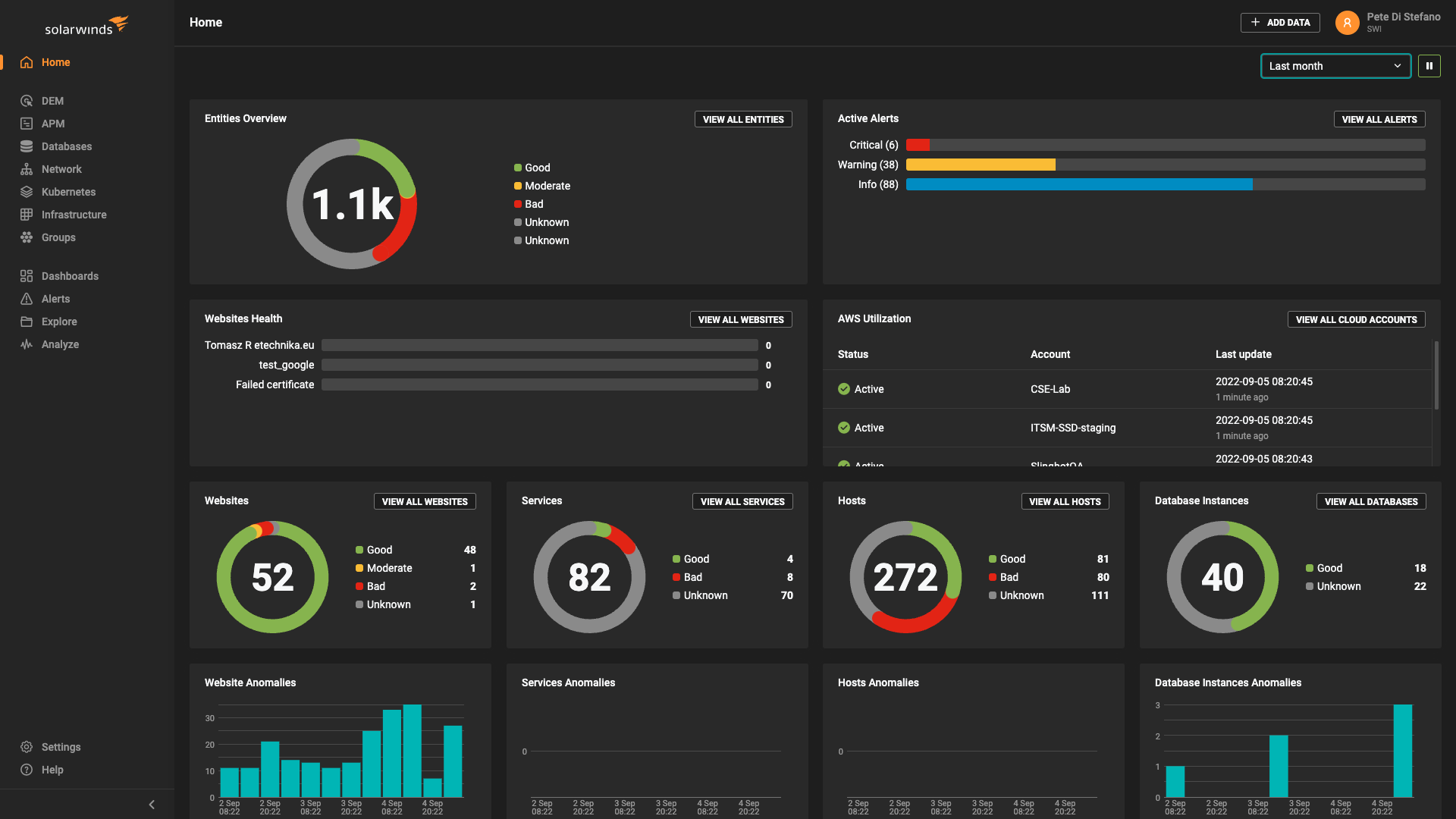Monitoring your Azure cloud computing environment requires an understanding of each component of your Azure infrastructure and how they all interact.
Cloud computing with Azure offers each of the three main advantages of cloud service providers: infrastructure as a service (IaaS), platform as a service (PaaS), and software as a service (SaaS). Combined, these three services provide a comprehensive cloud-based computing setup for any business. However, businesses must be sure to monitor their Azure services to ensure everything is functioning and performing as it should.
Why Businesses Use Azure
The advantages of cloud computing are extensive when compared to on-premises IT infrastructure. When you transition your local IT setup to the cloud—whether servers, software, or network infrastructure—you can establish a secure, reliable, and efficient IT environment.
Microsoft Azure is one of the few top cloud computing services for a reason. With Azure, IaaS is flexible and scalable, so your business can add and subtract elements of your IT infrastructure without the cost of physical scaling. Azure PaaS offers reliable application platforms with fast-action data transfer and an expansive set of integrations for major operating systems. Because Microsoft Azure is compatible with countless applications on every major OS, it’s a highly compatible cloud computing platform for practically all applications.
And Azure SaaS offers on-demand software with third-party hosting and maintenance, for easy management of your software inventory.
With its vast array of capabilities, it’s not hard to see why cloud computing with Microsoft Azure is used by more than 95 percent of Fortune 500 companies. However, as any IT manager using Azure services knows, you still need to monitor and troubleshoot your Azure services to ensure excellent performance. Here are some of our best practices for monitoring Azure services, so you can maintain a high-functioning, cost-effective, and user-friendly cloud computing platform.
Use an Effective APM Tool
To streamline performance monitoring in your Azure services, it’s best practice to invest in a reliable Azure monitoring tool. Problems happen. You need a tool capable of helping you quickly understand if the infrastructure or application is causing the issue. To monitor your application systems, you need an Azure monitoring tool with application performance management (APM) capabilities that can integrate with the diverse array of applications you are using on your Azure services. For instance, SolarWinds® AppOptics™ allows you to set alert thresholds, view graphical metrics, and troubleshoot app performance issues from a single pane of glass, with a vast array of app integrations and plugins. And for a deep dive into application performance, AppOptics offers code-level analysis of application status, including real-time code profiling and distributed tracing.
What’s more, you can use an APM tool to help you be proactive about issues. When an error or exception happens repeatedly, you can use the tool to automate the correction if there is no logical way to eliminate it entirely.
Monitor Using a Full-Stack APM
When it comes to monitoring your Azure environment, you want to make sure you have a holistic monitoring strategy, including monitoring key Azure services and the applications running on top of them. Make sure you’re implementing a full-stack monitoring solution that covers all your bases.
There are two main reasons why it’s so important to monitor the complete stack of your Azure environment.
First, having a bird’s-eye view of your Azure infrastructure allows you to troubleshoot more effectively, as you’ll be able to perform more complete diagnostic analysis. You need to make sure all the critical Azure services supporting the application are functioning and aren’t impacting the applications running on top of them. The AppOptics Azure Services integration provides out-of-the-box monitoring support for Azure App Services, Cosmos databases, function, key vaults, load balancers, network interfaces, Redis, SQL databases, storage, and virtual machines.
The second reason is to ensure there are no performance issues with transactions for customer-facing or internal applications critical to your business. Beyond resource needs from the infrastructure, poor code design, API or remote call issues, database design issues, call can lead to latency and a poor customer experience. In addition to monitoring Azure services to be able to monitor the applications, their services, transaction, down to the line of poor performing code is critical. Your APM tool will need to be able to monitor the infrastructure and applications of IaaS, PaaS, and SaaS deployments. That means you’ll need to collect not just Azure resources, but virtual machine and guest OS metrics for IaaS, plus application metrics for PaaS.
With a complex understanding of your cloud and local infrastructure, you can quickly troubleshoot issues inside or outside the cloud. This means you no longer need to switch between monitoring your cloud and local environments. Full-stack performance monitoring with AppOptics offers enhanced accuracy as to the source of performance issues, so you can maximize accuracy and minimize guesswork.
Set Up Threshold Alerts for Key Metrics
Once you have set up your full-stack APM with AppOptics, your work doesn’t stop there. To effectively understand when a performance issue has occurred, you need to create a baseline for each performance metric on your dashboard. That way you can understand what’s normal, based on standards for smooth and cost-effective IT performance.
With AppOptics, creating a baseline is straightforward. You can customize your performance baselines or use out-of-the-box metrics based on AppOptics thresholds. Once your baseline is established, use your centralized AppOptics dashboard to quickly view the source of performance issues before they damage your performance.
To detect performance issues in real time, Azure monitoring with AppOptics allows you to establish alerts when performance issues exceed your baselines. With AppOptics, you can configure notifications based on role-based permissions, so the appropriate IT staff know as soon as possible when any of your performance indicators exceed a performance threshold.
Azure Monitoring With SolarWinds AppOptics
For effective Azure monitoring, you will need to implement a monitoring software that covers as many bases as your Azure system does. With AppOptics, you can leverage a full-stack APM to monitor both your applications and your underlying infrastructure. AppOptics fully supports your Azure services with out-of-the-box metrics and thresholds you can easily customize to fit your unique IT infrastructure. With pre-populated dashboard and integration wizards, AppOptics is straightforward to set up and use. This makes it easier for you to ensure your Azure cloud computing services are performing as they should to support business productivity.














